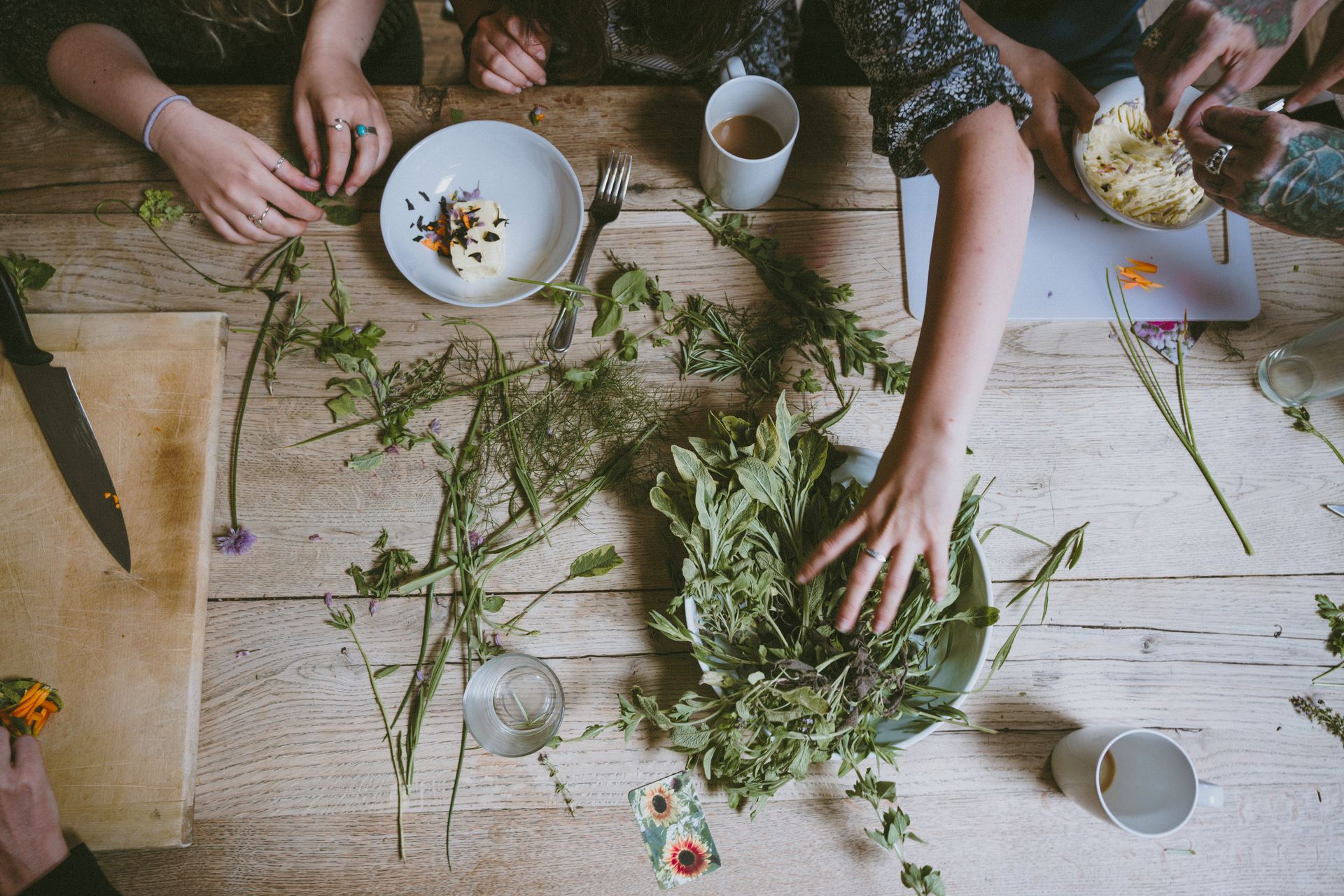Crafting Your Own Herbal Tinctures: A Journey into Natural Wellness
Crafting your own herbal tinctures can be a rewarding and empowering experience. These liquid extracts have been used for centuries to address various health concerns. Making your own tinctures allows you to explore the world of herbalism, harness the potency of botanicals and take control of your health in a holistic way.

Getting Started:
Select Your Herbs: The first step is to choose the herbs you want to work with. Research their properties, potential benefits, and any contraindications. Common herbs for tinctures include echinacea for immune support, lavender for relaxation, and peppermint for digestion.
Gather Supplies: You'll need high-proof alcohol (organic vodka), dried herbs (fresh herbs can introduce moisture and spoil the tincture), glass jars with tightfitting lids, and labels for proper identification.

The Tincture-Making Process:
Measure and Chop: Measure the desired amount of dried herbs (usually in ounces) and chop them finely. The finer the herbs, the better they infuse the alcohol.
Combine Herbs and Alcohol: Place the chopped herbs in a glass jar and cover them with alcohol. The alcohol should fully submerge the herbs. Seal the jar tightly.
Shake and Store: Store the jar in a cool, dark place for at least 2-6 weeks, shaking it daily. This allows the alcohol to extract the active compounds from the herbs. Longer steeping times can result in stronger tinctures.
Strain and Bottle: After the steeping period, strain the liquid through a fine mesh strainer or cheesecloth into a clean glass jar or bottle. Squeeze the herbs to extract every last drop.
Label and Store: Clearly label your tincture with the herb(s) used, the date it was made, and any specific instructions. Store it in a cool, dark place, away from direct sunlight and heat.

Tips for Success:
Alcohol Strength: The alcohol you use should be at least 40% (80 proof) to ensure effective extraction. Adjust the alcohol-to-herb ratio for stronger or milder tinctures.
Quality Matters: Use high-quality, organic herbs for your tinctures to ensure purity and potency.
Safety First: Research each herb thoroughly, as some can interact with medications or have contraindications. Start with small doses and monitor your body's response.
Experiment and Customize: Crafting tinctures is an art as well as a science. Feel free to experiment with different herb combination s and proportions to create tinctures that address your specific health needs.

Using Your Tinctures:
Herbal tinctures can be used in various ways:
Oral Ingestion: Typically, tinctures are taken in small dropperfuls (a few drops to a teaspoon) diluted in water or juice. Follow recommended dosage guidelines.
Topical Application: Some tinctures can be diluted with a carrier oil and applied to the skin for localized relief.
Cooking and Beverages: You can incorporate tinctures into recipes or mix them into beverages like tea or smoothies.
Crafting your own herbal tinctures is a journey into the world of herbalism and natural wellness. It allows you to deepen your connection with nature, take control of your health and explore the therapeutic properties of plants. Remember that while herbal remedies can be powerful, it's essential to consult with a healthcare professional if you have specific health concerns or are taking medications, as herbal tinctures can interact with other treatments. With care, knowledge, and a little patience, you can create personalized, effective tinctures that enhance your well-being in a holistic and natural way.









